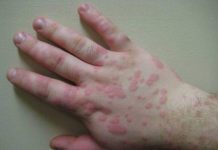In the United States, more than 90% of all adults over the age of 15 have had the chicken pox. This means that every one of those people risks developing shingles disease, or herpes zoster.
After causing the chicken pox, this virus lays dormant in the body’s nervous system, waiting to be triggered.
Triggers are typically diseases that involve a weakened immune system, such as stress, chemotherapy or other immunosuppressive drugs, or diseases that directly affect the immune system, such as HIV or non-Hodgkin’s lymphoma.
There are times, however, when there is no apparent trigger. People are more susceptible to shingles outbreaks as they age.
The pain of a shingles outbreak can vary from mildly irritating to excruciating. General practice has been to limit the use of pain killers for cases of shingles with extreme pain.
New research has shown that treating moderate pain can reduce depression and anxiety in shingles sufferers, and allow them to continue their lives in a more normal fashion.
The drug of choice in this study was oxycodone, a powerful pain reliever available only by prescription. Oxycodone, however, is not without its side-effects; it is addictive and can cause constipation.
If you think you may be having an outbreak of shingles, contact your health care provider as quickly as possible. Certain anti-viral medications may be given to reduce the severity of the outbreak, and you should be given help dealing with the pain of shingles.
Symptoms of shingles include fever, headache, nausea, and a tingling, itching, or burning sensation often only one side of the body or face.












